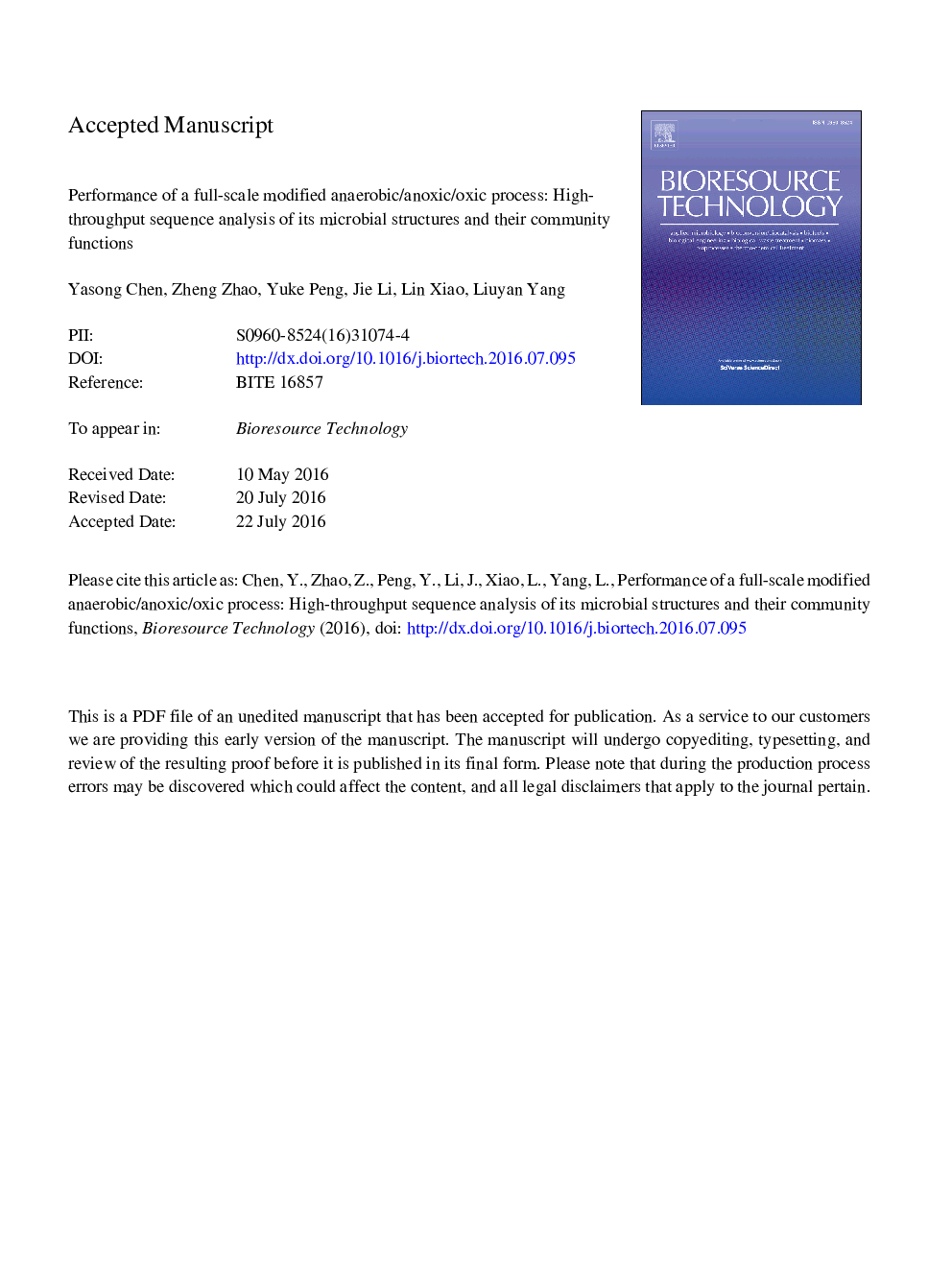| Article ID | Journal | Published Year | Pages | File Type |
|---|---|---|---|---|
| 7069588 | Bioresource Technology | 2016 | 35 Pages |
Abstract
The average COD, TN, TP, and NH4+-N elimination rates in a new wastewater treatment plant (WWTP) based on a modified A2/O process were 83%, 72.4%, 93.5%, and 98.6%, respectively, even under conditions of a low C/N ratio and low temperature. Among the four potential denitrifying units, the post-anoxic unit was the least efficient with respect to the removal efficiency. However, the structures of the bacterial community among samples obtained from the treatment units were similar, as demonstrated using Illumina Miseq high-throughput sequencing. Genera with nitrifying, denitrifying, hydrolyzing, and glycogen-accumulating activities were identified in all units, indicating that functional groups were highly enriched in the active sludges and thus enabled nitrogen removal. The key functional microorganisms responsible for nitrification-denitrification in the WWTP were species belonging to the genera Nitrospira, Hydrogenophilaceae, Comamonas, Dechloromonas, Thauera, Haliangium, and Halomonas.
Related Topics
Physical Sciences and Engineering
Chemical Engineering
Process Chemistry and Technology
Authors
Yasong Chen, Zheng Zhao, Yuke Peng, Jie Li, Lin Xiao, Liuyan Yang,
